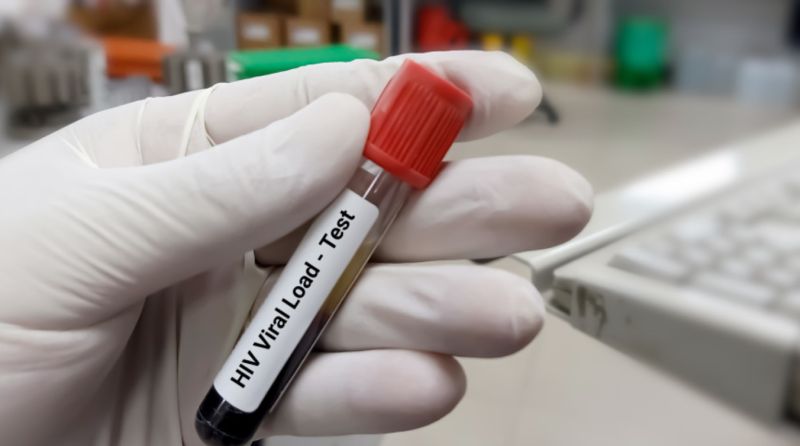She is the third person ever to be cured of this disease. Using the new approach, researchers hope to cure more people from diverse backgrounds.
Using a new transplant method involving umbilical cord blood, scientists have announced on Tuesday that a woman of mixed race appears to be the third person ever cured of HIV. This opens the door to curing many more people from diverse racial backgrounds than was previously possible.
Cord blood is more widely available than adult stem cells used in the bone marrow transplants that cured the previous two patients, and it does not need to match as closely. As most donors in registries are Caucasian, allowing only a partial match could cure dozens of Americans with both HIV and cancer each year.
In addition to having leukemia, the woman received cord blood to treat her cancer. In contrast to the usual practice of finding a bone marrow donor of similar race and ethnicity to the patient, this transplant came from a partially matched donor. While the transplant was taking place, she also received blood from a close relative to give her body temporary immune defenses.
In Denver, Colorado, researchers presented details of the new case on Tuesday at the Conference on Retroviruses and Opportunistic Infections.
According to the researchers, the new case marks a significant step forward in developing a cure for H.I.V. based on sex and racial background.
Mixed race and gender are important scientifically and in terms of community impact, said Dr. Steven Deeks, an AIDS expert at the University of California, San Francisco who was not involved in the study.
While women make up more than half of H.I.V cases in the world, they make up only 11 percent of cure trial participants.
In spite of this, Dr. Deeks does not see the new approach becoming commonplace in the near future. “These stories may provide inspiration and a road map for the field,” he said.
H.I.V. can be controlled with powerful antiretroviral drugs, but it must be cured to end the decades-old epidemic. Nearly 38 million people live with HIV worldwide, and 73 percent of them receive treatment.
Bone marrow transplants are not a realistic option for most patients. Since these transplants are highly invasive and risky, they are generally reserved for cancer patients who have exhausted all other options.
So far, only two cases of H.I.V. cure have been reported. Known as “The Berlin Patient,” Timothy Ray Brown remained virus-free for 12 years before dying from cancer in 2020. Another patient, later identified as Adam Castillejo, was reported to be cured of H.I.V., corroborating Mr. Brown’s case.
Both men received bone marrow transplants from donors carrying a mutation that prevents HIV infection. Only about 20,000 donors have been identified with the mutation, most of whom are from Northern Europe.
Both men suffered punishing side effects after their bone marrow transplants, including graft versus host disease, which occurs when the donor’s cells attack the recipient’s. It was almost fatal for Mr. Brown after his transplant. After his transplant, Mr. Castillejo lost nearly 70 pounds, developed a hearing loss, and survived multiple infections, according to his doctors.

Dr. JingMei Hsu, the patient’s physician at Weill Cornell Medicine, said the woman left the hospital after her transplant on day 17 without developing graft versus host disease. According to Dr. Hsu, the combination of cord blood and her relative’s cells may have saved her from many of the brutal side effects of a typical bone marrow transplant.
According to Dr. Sharon Lewin, president-elect of the International AIDS Society, who was not involved in the study, graft versus host disease may have contributed to prior HIV cures. This idea has been dispelled by the new results, according to Dr. Lewin.
Due to privacy concerns, she did not want to disclose her exact age. She was diagnosed with H.I.V. in June 2013. Her virus levels were kept low by antiretroviral drugs. She was diagnosed with acute myelogenous leukemia in March 2017.
A cord blood donor with a mutation that blocks H.I.V.’s entry into cells donated cord blood to her in August of that year. Cord blood cells can take about six weeks to engraft, so she was also given partially matched blood stem cells from a first-degree relative.
Dr. Marshall Glesby, an infectious diseases expert at Weill Cornell Medicine of New York and part of the research team, said the half-matched “haplo” cells from her relative supported her immune system until the cord blood cells were dominant.
“The relative transplant was like a bridge that enabled the cord blood to take over,” he explained.
37 months after the transplant, the patient discontinued antiretroviral therapy. Her blood tests show no signs of H.I.V. and her antibodies to the virus are not detectable more than 14 months later.
Exactly why stem cells from cord blood work so well is unclear, experts said. Dr. Koen Van Besien, director of the transplant service at Weill Cornell, believes they may be more adaptable to a new environment. In his words, “these are newborns, they are more adaptable.”.
In addition to stem cells, cord blood may also contain elements that aid in transplantation.
“Umbilical stem cells are appealing,” Dr. Deeks said. It may be that there’s something magical about these cells and cord blood in general that provides an extra benefit.”
